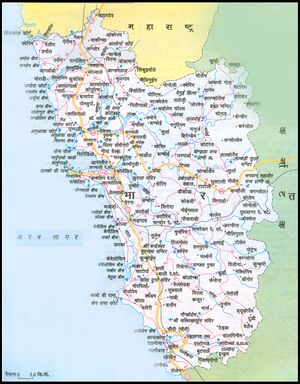Divar
| Author:Laxman Burdak, IFS (R) |

Divar (दीवर द्वीप) is an island that lies in the Mandovi river in the Indian state of Goa.
Variants
Origin
- Divar is derived from the word Dipavati or 'small Island'
- It gets name after Dar (दार)/ Diyar (दियार) gotra of Jats.
Location
It is located approximately upriver 10 km from Panjim. The Island is connected to Old Goa on the south-east side, Ribandar, on the south-west side and Narve on the north side, all by ferry. A launch also connects Divar to the city of Panjim from further north-west, in the island-village of Vanxim. The Konkan Railway passes through the village and the nearest stop to the village is the train station at Carambolim.
History
The original inhabitants of this island were people who once lived in Old Goa but had to leave during a disastrous plague that greatly reduced the population of Old Goa. They are mainly of Luso Indian and Konkani descent.
It is believed that the Island of Divar was once a site of Hindu pilgrimage - one of many in India - and hosted the temples of Saptakoteshwar, Ganesh, Mahamaya and Dwarkeshwar. During the Christianization of Goa, in the 16th century, many were shifted, by the Goan Hindus, to other locations.
It's also said, that the current Cemetery near Church at hilltop once housed a Ganesha Temple. The Hindus rehabilitated it in village of Candola near Marcel. Shirali, a village near Bhatkal in Karnataka also houses a part of the Shree Ganesh Mahamaya temples of Navelim and Goltim.
The ancient site of pilgrimage is called Porne Tirth (Old pilgrim spot-in Konkani).
Rui Gomes Pereira in his book Goan Temples and Deities writes, "The original temple of Saptakoteshwar was constructed in the 12th century by the kings of Kadamba Dynasty. Saptakoteshwar was the patron deity of the Kadambas. The temple was destroyed by the Sultan of the Deccan in the middle of the 14th century. The Saptakoteshwar idol was then relocated to Naroa in Bicholim. Later, the temple was reconstructed at the same locality by Madhav Mantri of Vijaynagara at the close of the same century. However, it was then abandoned due to the diversion of pilgrims to the new temple, which now housed the idol. By the time the Portuguese found it, in 1515, the temple was a forgotten ruin in the wilderness." Prior to its destruction, the temple used to attract up to three thousand pilgrims from Goa itself during its annual procession. The present temple structure in Naroa has distinctive Indo-Portuguese architecture.
According to Dr Olivinho J F Gomes, Professor of Konkani, Divar was one of the first places the Portuguese ventured to convert locals to Christianity. The Hindu Brahmin and Kshatriya castes readily converted, thus creating the Bamonn and Chardo communities.
दीपवती
विजयेन्द्र कुमार माथुर[1] ने लेख किया है ...दीपवती (AS, p.439) गोआ के उत्तर में स्थित एक द्वीप का पुराना नाम है। अब इस द्वीप को 'दीवर' नाम से जाना जाता है। यह पणजी के नज़दीक स्थित है। इस द्वीप का पौराणिक महत्त्व भी है। स्कंदपुराण 'सह्याद्रिखंड' में दीपवती द्वीप पर सप्त ऋषियों द्वारा शिव के मंदिर की स्थापना का उल्लेख है।

